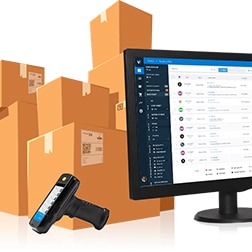1. Concentrate on your requirements.
It might be difficult to manage a warehouse full of inventory. Identifying the most important issues and focusing on them first can help you manage everything better. It’s improbable that every item in your warehouse will see the same level of customer demand. Keep the most popular things in stock, and you’ll be well on your way to keeping your consumers satisfied.
2. Implement a system for managing inventory.
It’s critical to consider how your company handles order volumes, replenishment cycle durations, safety stock, forecasts, seasonality, and other factors. Make adjustments to each activity based on your individual business, keeping track of what works and what doesn’t. Making a significant improvement in one area can be more beneficial than making a few minor improvements all around.
3. Make the switch to mobile.
Inventory management has been transformed by mobile technologies. Barcode scanning, for example, speeds up the receipt system and tracking of items while also reducing errors. Meanwhile, sales apps provide inventory data to salespeople on the go. You don’t have to be linked to a computer in your warehouse any longer. You can monitor critical company activities from your home, on vacation, or anywhere you are.










